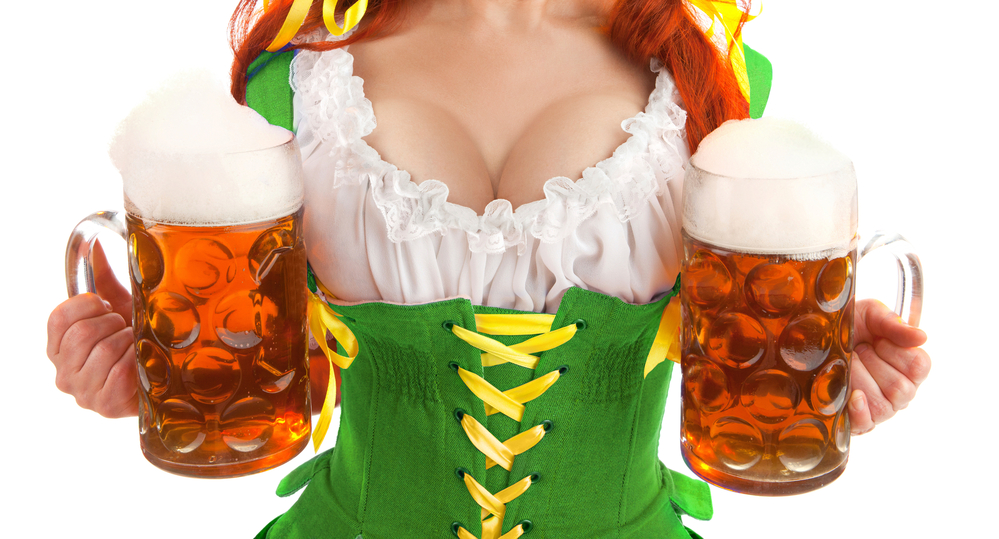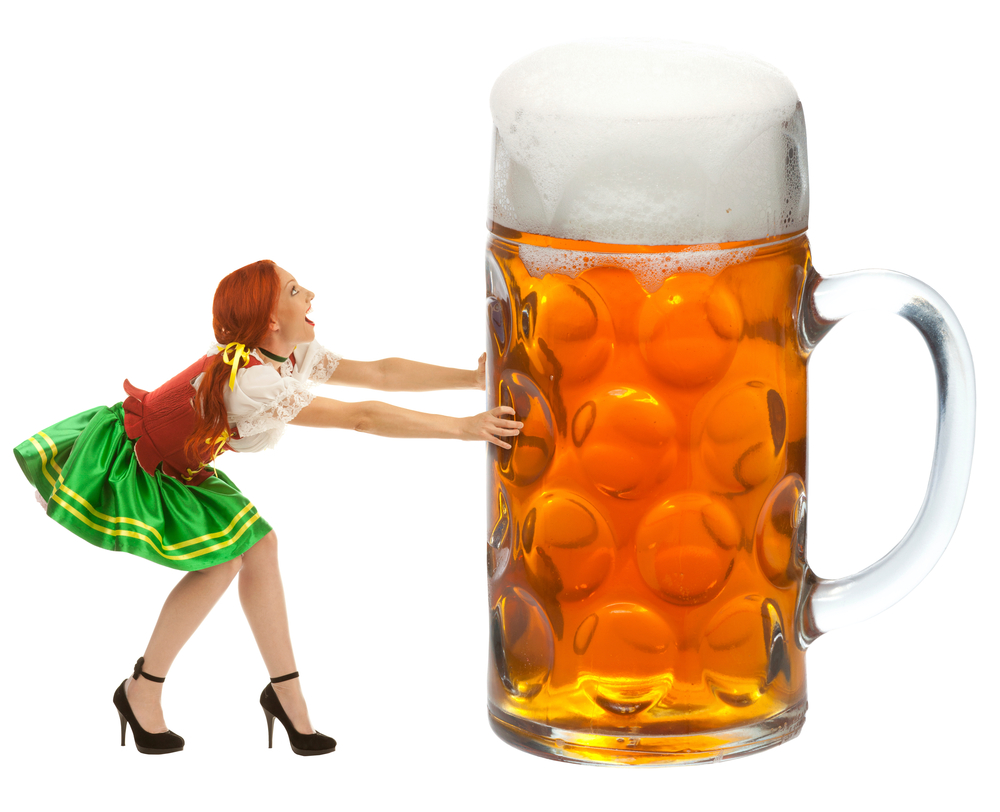
Beer is more than just a drink. It’s a culture, history, and aesthetic that changes from nation to nation, and many traditions of beer culture today have been continued from centuries long ago. To get a taste of beer’s heritage, look no further than the classic German beer stein!
The beer stein is a symbol of Old World dining halls and pubs, and it evokes the idea of knights and villagers alike sharing a brew in a dingy tavern. It’s also the symbol of Oktoberfest and all of its great beer, sausages, and sauerkraut. Most of all, the stein symbolizes a really good time! By learning about the history and styles of beer steins, you can enhance your enjoyment of beer and make each sip all the more special. This beer stein guide has everything you need to know to get started!
The History of the Beer Stein
Many people wonder “where did the beer stein come from?” and while Germany is the obvious answer, the exact dates and purpose of the stein are still debated. The most common theory is that steins were developed in Germany in the 1300’s, and many experts believe the classic lid was used to prevent bugs or debris from contaminating the beer. Some believe the lid was to prevent the raging Black Plague of the time, although there’s little evidence to support this.
German steins were primarily made from stoneware, pewter, or clay. This allowed them to be mass-produced (for the time,) and the material lent itself to artists looking to add their own touch with unique paintings and designs. In the 1800’s, glass became the popular form of German mugs while traditional steins became an item sought by artisans and infatuated tourists.
Fun fact: In German, a stein is called a krug, humpen, or seidel, depending on the region and size of the mug. In English, it’s only called a stein because it was derived from the German word for “stone,” which is “stein.” Don’t worry, though, everyone in Germany will know what you mean if you ask for a stein of your favorite ale!
The Purpose of a Beer Stein
One of the first things people ask is, “why does a beer stein have a lid?” since it’s such a unique characteristic of the mug. Originally, German beer stein lids preserved the beer from insects, debris, and other contaminates that you’d expect in the 14th century. Some speculate that it was also to preserve the flavor from dissipating, or to help keep the ale at a perfect temperature for longer. These days, however, people use steins mostly to connect with an interesting culture and heritage in a direct way. Whether in Munich or California, drinking from a stein enhances your beer and gives it more meaning, while also adding a lot of fun to the experience!
The Paintings on Beer Steins

One of the coolest things about German steins is the unique and colorful paintings found on nearly every piece. Many historical steins feature scenes of castles, villages, plus kings and drunkards alike. Some are floral with intricate designs, and others feature animals that had a cultural importance at the time. For example, a cat symbolized a hangover due to its wailing which resembled the cries of pain after too many brews, while a pig represented good luck and fortune. Most paintings were up to the artist or commissioner, and this is why you’ll find anything from flowers to animals to symbolic stories depicted on historical and replicated steins.
Different Types of Beer Steins
There are many types of German beer steins to enjoy, from traditional ceramic to wooden, along with the more modern dimple glass version. Each stein has a different weight depending on the size and material, but they’re generally heavier than they look! If you’re wondering, “how much does a beer stein weigh?” the answer may surprise you: the ceramic and glass steins can range from 1 to 5 pounds even before beer is added!
While there may be a debate among purists about choosing a ceramic beer stein vs glass beer stein, it really comes down to personal preference on which you enjoy most. Here are some of the most common types of steins available:
Ceramic Beer Steins: this is one of the most classical versions, and it usually comes with raised ceramic designs, a pewter lid, and of course, a beautiful painting!

Glass Beer Steins: A modern glass beer stein mug usually has dimpled glass for ease of holding and aesthetic beauty, and they rarely feature a lid of any type. The glass dimple stein beer mug is easier to drink from as well due to its large mouth. One other major difference: you likely won’t find intricate designs or paintings on glass steins.
In Germany, most beer halls and gardens will feature glass beer steins unless you specifically ask for a more authentic ceramic one. Glass is easier to wash, comes in countless sizes (such as the large Boot that’s also a famous drinking challenge,) and unlike the more intricate steins, nobody will be too upset if a glass breaks during a rowdy evening!
Wooden Beer Steins: wooden beer steins are actually a more modern take on the classic, and this is due to the necessary lacquer or other safe materials needed to keep the liquid from spilling out or soaking the interior. However, they make a great and retro look that can add a fun twist to your collection!
Beer Stein Traditions, Culture, and Events
Beer steins are synonymous with German drinking culture, large beer festivals, and Oktoberfest celebrations the world over. It’s hard to even imagine a trip to Germany without visiting a beer hall or garden, ordering a large stein, and enjoying it with the finest sausages, pretzels, and sauerkraut available.
Of course, Germany also has its fair share of traditions around the stein, and one of the most fun is the beer stein holding contest. These are done regularly at beer halls and gardens alongside local festivals. The rules are simple, but actually winning a beer stein holding contest is another feat.
Beer Stein Holding Contest

To play, contestants are each given a large stein that must be held with their arm straight out in front of them. The thumb must also be on top of the handle and the hand in a standard clenched position. The last person left holding the stein without lowering or folding their arms, dropping the stein, or spilling a single drop of beer, wins.
It seems simple enough, but once the glasses are filled to the brim with tasty brews, it becomes shockingly difficult to hold. Remember, these are large glass steins, and they weigh about 3 to 4 pounds before the ale is added, which can bring it closer to 5lbs total.
If you want to know how to win a beer stein holding contest, you essentially need great strength in your forearm, shoulder, and chest, and you need to control your breathing so you don’t start shaking and spilling the beer. The game can last anywhere from 1-5 minutes, and if you win, you’ll likely win a free round of beers or the stein itself depending on the rules.
Das Drinking Games…
Aside from holding contests, there’s also games where people try to drink from outrageously large steins like Das Boot. Das Boot started as a military tradition in Germany but has since become a worldwide staple of rowdy nights. The size of the boot-shaped glasses differ, but they all offer a challenge to anyone wishing to drink it in one go!
Collecting Authentic and Historic German Beer Steins

Some older beer steins can sell for thousands of dollars, and if it’s from hundreds of years ago, it could even be added into historical registries in museums or sold for a life-changing amount of money.
If you’re looking to collect authentic or historic steins, here are some quick tips about valuable German beer stein markings to get you started!
It should say “Made in Germany” or “Gemacht in Deutschland.” Both of these phrases will prove it’s an authentic German stein, but they won’t guarantee that it’s historic.
If there’s no bump on the handle, then it’s likely from before the 1920’s, which is when the bumped-handle became standard on most steins. This is a very important distinction and a classic identification of a German beer stein that may hold value.
Hand-painted steins are much more valuable and more likely to be historic, and you can tell by looking for imperfections in the paintings or raised areas caused by the resin. Mass-produced steins have nearly perfect images without bumps or distortions, so take a close look at the paintings and even feel them for any imperfections to see if they’re handmade.
Finally, the most expensive historical steins often have silver, ivory, or glass components for the lids or even the mug itself. These are harder to tell apart at first glance, but if you find any steins in your attic, you can have them appraised to see what the materials really are.
Where to Buy Authentic German Steins
If you’re not planning on visiting Germany anytime soon, you can order authentic steins online and enjoy them in the comfort of your home! Explore different designs and materials until you find the perfect one that speaks to you!
Here are some reputable websites that offer authentic steins expertly crafted in Germany: